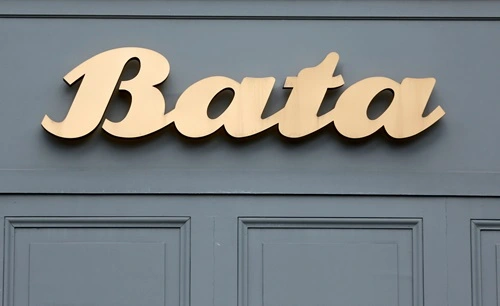Bata, founded in 1894 in the Czech Republic, has grown to be a global leader in the footwear industry. Known for producing affordable yet stylish shoes, the company operates in more than 70 countries, with manufacturing facilities spread across 23 nations. Bata’s presence in emerging and established markets makes it a household name, especially in India, where it dominates the mid-range footwear sector. In this article, we explore the company’s Strengths, Weaknesses, Opportunities, and Threats (SWOT) in 2024 to understand its market position and future prospects.
Current Overview of Bata

Bata operates over 5,000 stores globally, with 1,200 outlets in India alone. The company continues to cater to a wide range of customers, from rural areas to metropolitan cities, offering everything from school shoes to formal wear. Bata has leveraged its strong distribution network and brand heritage to maintain its market position, but it faces mounting challenges from local and global competitors like Adidas, Nike, and Puma.
Strengths
1. Global Presence: Bata operates in more than 70 countries, giving it a broad geographic reach and reducing dependency on any single market. Its extensive retail network allows for significant global penetration.
2. Strong Distribution Network: The company has established a robust distribution network with over 5,000 retail stores worldwide, making its products accessible in both urban and rural areas. This deep market penetration ensures Bata can capture demand across different customer segments.
3. Cost Advantage: Bata’s ability to produce affordable footwear allows it to cater to a price-sensitive market. The company efficiently manages its supply chain and manufacturing costs, giving it a competitive edge in regions where affordability is a key purchasing factor.
4. Product Diversification: Bata has a diverse portfolio, offering footwear for all categories—men, women, and children—and including everything from formal shoes to sportswear. Its sub-brands like Power, North Star, and Hush Puppies cater to different customer needs.
5. Brand Heritage and Trust: Bata has been a trusted brand for over a century, earning the loyalty of millions of customers. Its long-standing reputation for offering durable and reliable footwear continues to support its growth, particularly in developing markets like India.
Weaknesses
1. Limited Market Share in Premium Segment: Despite its global presence, Bata struggles to compete with premium brands like Nike and Adidas. The company’s image as a provider of affordable footwear limits its ability to capture the growing premium footwear market, particularly in urban and high-income areas.
2. Perceived Low Quality: Due to its affordability, Bata’s products are often associated with lower quality compared to its premium competitors. This perception affects its ability to attract customers who prioritize high-end fashion and brand prestige.
3. Over-reliance on Indian Market: While Bata is a global brand, it is highly dependent on the Indian market, which contributes a significant portion of its revenue. This reliance poses a risk, as any economic downturn or increased competition in India could negatively impact the company’s financial performance.
4. Declining Sales: Bata has faced declining sales in recent years due to rising competition and changing consumer preferences. Global players and local brands have eroded Bata’s market share, particularly in the sports and lifestyle footwear segments.
Opportunities
1. Expansion in Premium Footwear: As consumer preferences shift toward more fashionable and premium footwear, especially in urban markets, Bata can capitalize by expanding its offerings in the high-end category. This could help the company attract younger, fashion-conscious consumers.
2. Rural Market Growth: Bata has significant potential to expand in rural areas, particularly in emerging markets like India and Africa, where disposable incomes are rising. By offering affordable yet durable footwear, Bata can tap into these underpenetrated markets.
3. E-commerce Growth: With the increasing shift to online shopping, Bata has the opportunity to strengthen its e-commerce presence. Enhancing its digital platform and leveraging online marketing strategies can help it reach a broader customer base, particularly in urban areas.
4. Sustainability and Innovation: With growing demand for sustainable and eco-friendly products, Bata can innovate by introducing environmentally conscious footwear. Investing in research and development to create products using sustainable materials could differentiate the brand and align it with global sustainability trends.
Threats
1. Intense Competition: Bata faces stiff competition from both local and global footwear brands such as Adidas, Nike, Puma, and local players like Relaxo and Khadim. These competitors often have stronger brand appeal in the premium and sports footwear categories.
2. Economic Fluctuations: Economic downturns, particularly in key markets like India, could adversely impact Bata’s sales. With much of its customer base in price-sensitive regions, any economic volatility could lead to reduced consumer spending on non-essential goods like footwear.
3. Counterfeiting: The prevalence of counterfeit products in the footwear industry poses a significant threat to Bata. Duplicate products can damage the company’s brand image and lead to revenue losses.
4. Changing Fashion Trends: The rapidly evolving fashion industry requires constant innovation. Bata’s traditional designs and slower adaptation to changing trends may result in lost market share to brands that are more agile in responding to consumer preferences.
Conclusion
Bata’s long-standing presence in the global footwear market, coupled with its strong distribution network and affordable products, continues to be a source of strength. However, to stay competitive, the company must address its weaknesses, particularly its limited market share in the premium segment and the perception of low quality. By expanding into premium footwear, leveraging e-commerce, and focusing on rural market growth, Bata can unlock new opportunities. At the same time, it must remain vigilant against intense competition, economic fluctuations, and counterfeiting threats. With the right strategy, Bata can maintain its legacy as a trusted brand while adapting to the changing demands of modern consumers.